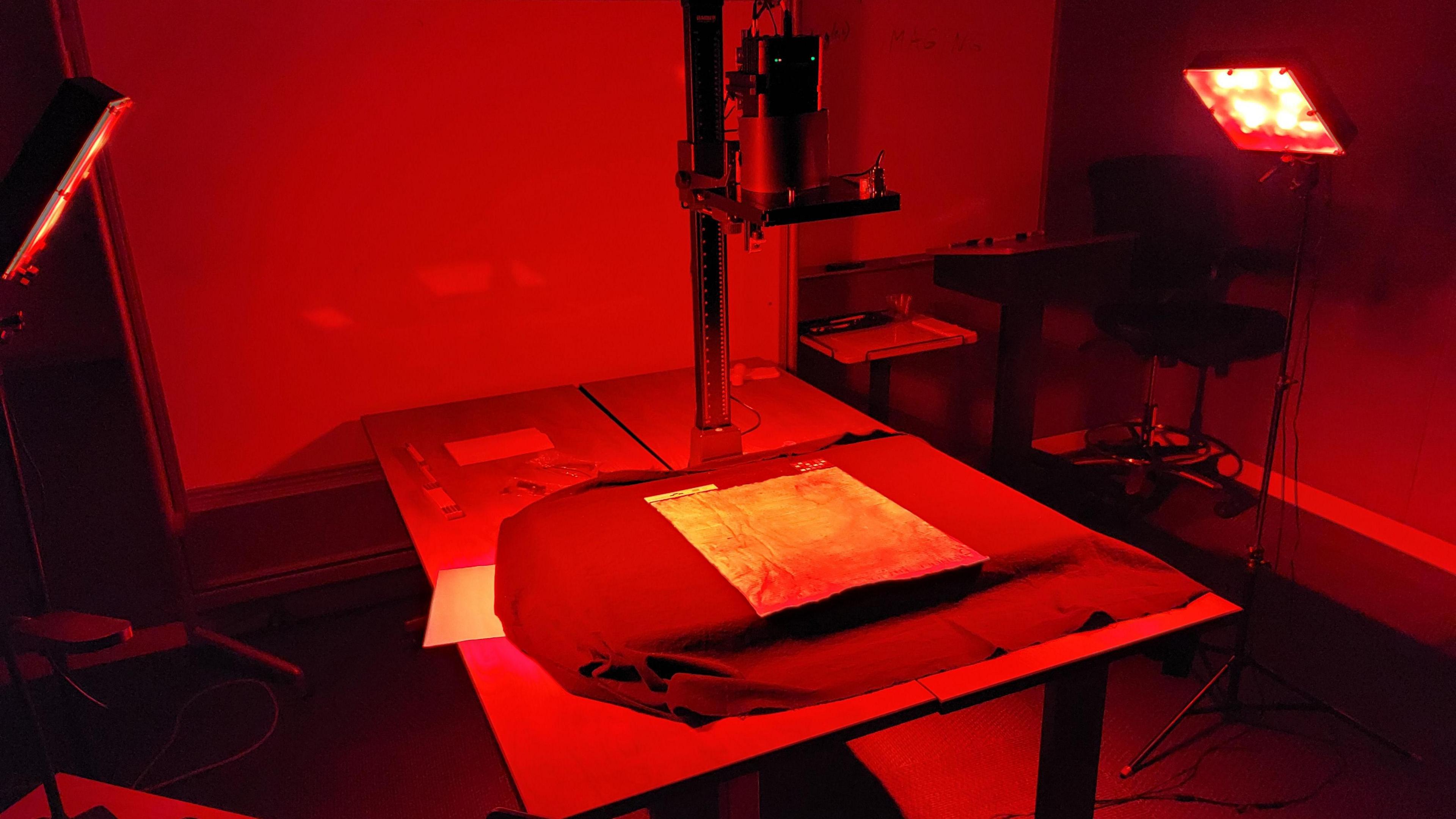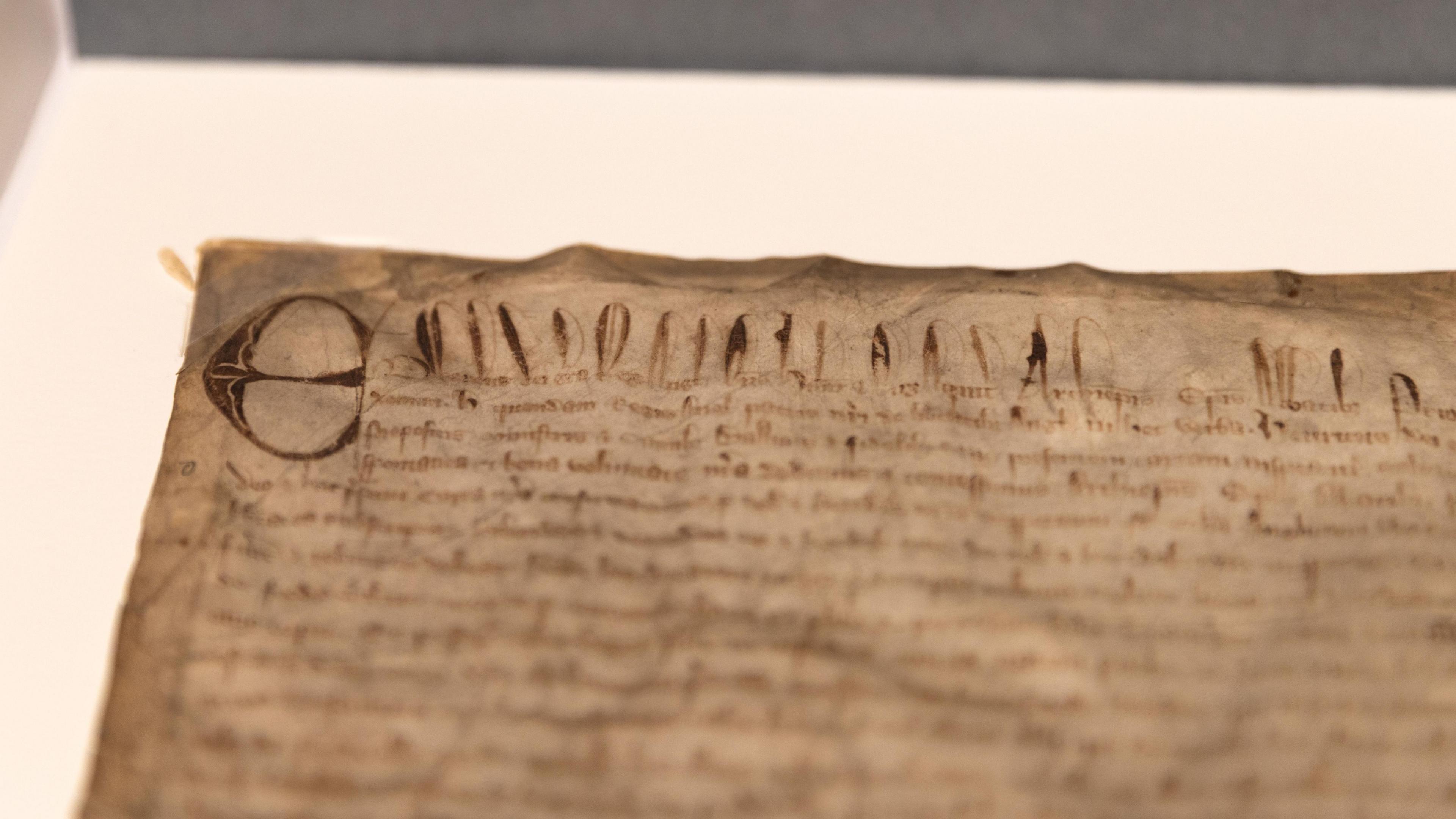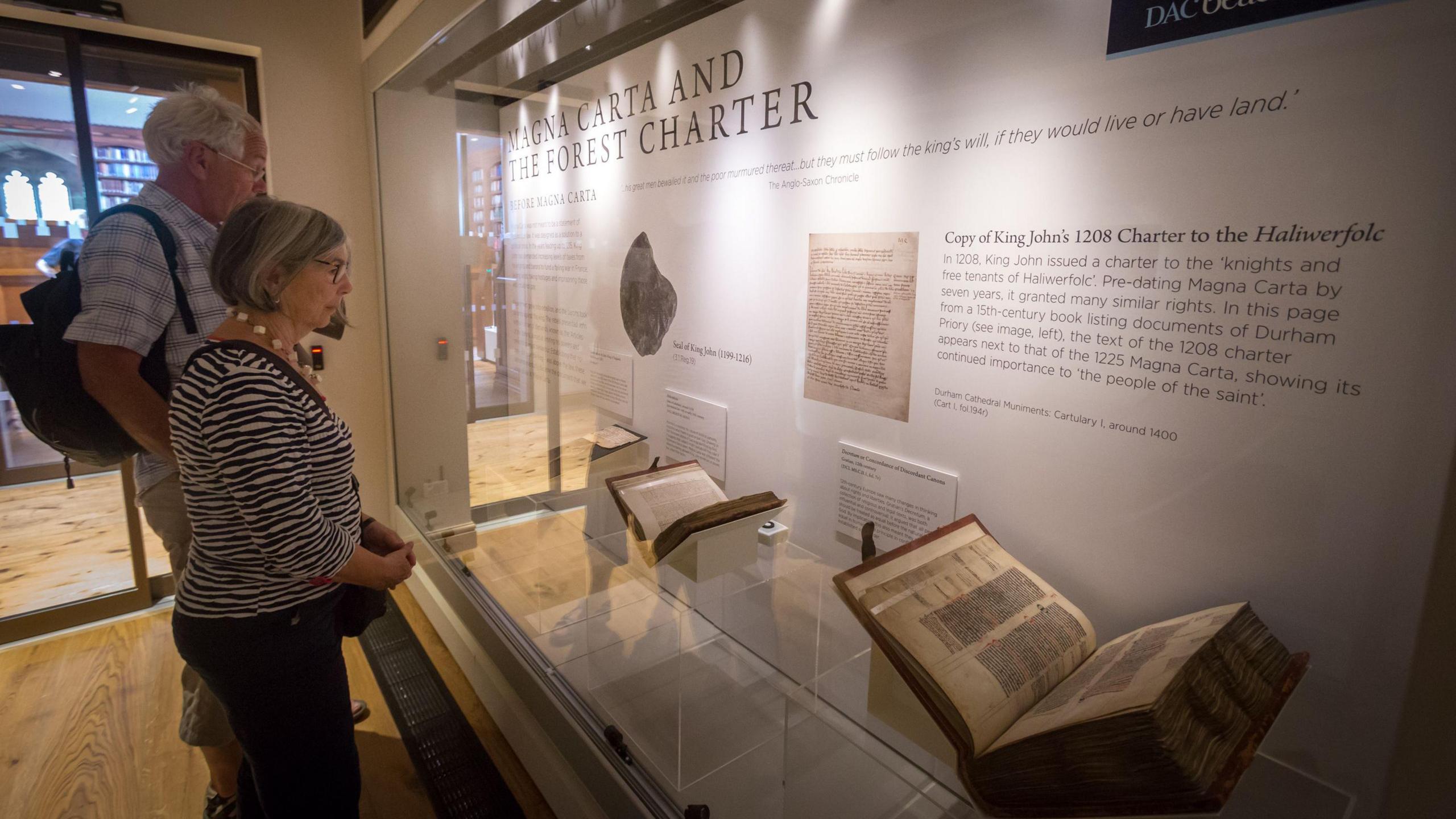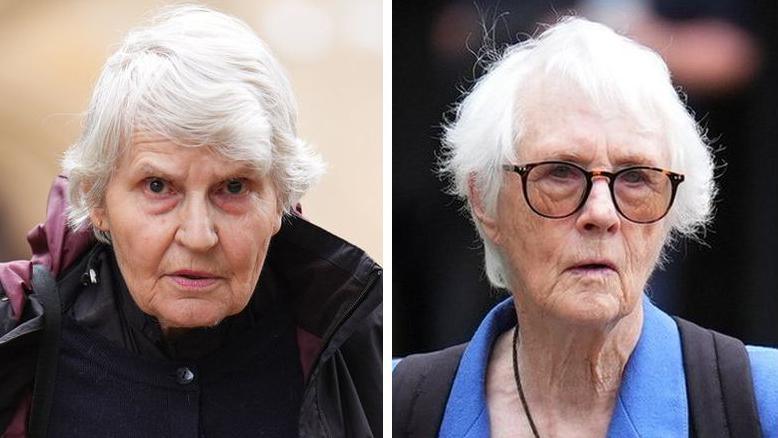Cut-price Magna Carta 'copy' now believed genuine

Harvard Law School paid just $27.50 (then about £7) for the document in 1946
- Published
A manuscript once considered an unofficial copy of Magna Carta is now believed to be a genuine version and ''one of the world's most valuable documents'', according to UK academics.
Harvard Law School paid $27.50 (then about £7) for it in 1946 and for years it has remained tucked away in its library, its true identity unknown.
But two medieval history professors have concluded it is an extraordinarily rare and lost original Magna Carta from 1300, in the reign of King Edward I, that could be worth millions.
''This is a fantastic discovery," said Prof David Carpenter from King's College London, who began analysing it after seeing digitised images of it on the US university's website.
"It is the last Magna Carta... [and it] deserves celebration, not as some mere copy, stained and faded, but as an original of one of the most significant documents in world constitutional history; a cornerstone of freedoms past, present and yet to be won."
He said he was "absolutely astonished" that not only had he discovered this authentic version, but that, over the years, no-one seemed to know what they had and that it had been sold "for peanuts".
According to Harvard's library accession register, the document catalogued as HLS MS 172 was acquired in 1946 and was described in an auction catalogue as a "copy made in 1327… somewhat rubbed and damp-stained".
The manuscript's purchase price of $27.50 would be about $450 (£339) in 2025, based on inflation.
Magna Carta is a charter first issued by King John in 1215 that guaranteed the liberties and rights of his subjects and also placed the Crown under the authority of the law.
Considered a key step in the evolution of human rights against oppressive rulers, it has influenced the framing of constitutions around the world.
The document - which was circulated across the counties of England - was reissued after 1215 by successive kings through the years to 1300, meaning "there may have been 200 originals", said Prof Nicholas Vincent of the University of East Anglia, Norwich, who helped Prof Carpenter establish the Harvard document's authenticity and provenance.
Today, 24 of these originals survive from the various editions between 1215 and 1300, most of which are in the UK.
Two are held in Washington DC's National Archives, and one in Parliament House in Canberra, Australia.

The auction catalogue said the document was from 1327
"It is an icon both of the Western political tradition and of constitutional law," said Prof Vincent.
''If you asked anybody what the most famous single document in the history of the world is, they would probably name Magna Carta."

Prof David Carpenter is "astonished" at the discovery he made
The professors, who spent a year researching Harvard's document, believe it is from the town of Appleby, Cumbria.
They think the trail from Appleby to Harvard involves the Lowthers, a land-owning family who gave the document to Thomas Clarkson, a leading abolitionist of the 1780s.
Clarkson's estate passed through a series of heirs to the Maynard family, then at the end of 1945, AVM Forster Maynard sold it at auction at Sotheby's.
A London bookseller paid £42 for the document, months before Harvard bought it for a fraction of that price.
As for its value today, Prof Vincent said: "I would hesitate to suggest a figure, but the 1297 Magna Carta that sold at auction in New York in 2007 fetched $21m [about £10.5m at the time], so we're talking about a very large sum of money."

The document was tucked away in the archives for decades

The document known as HLS MS 172 underwent extensive testing
Because HLS MS 172 is badly faded in places, the academics worked not from the original but from pictures obtained using ultraviolet light and spectral imaging.
They discovered the handwriting and dimensions were consistent with those of the six previously known 1300 originals.
They also did a detailed check of the actual text. Because the wording of Magna Carta evolved over the years, the words and their order needed to be identical to that found in the other 1300 originals.
It passed this test "with flying colours". The identity of the text was "the crucial proof", explained Prof Carpenter.

Prof Vincent says the provenance of Harvard's charter is "particularly wonderful"
Congratulating the academics for their discovery, Amanda Watson, Harvard Law School's assistant dean for library services, said this exemplified what happened when collections were opened to brilliant scholars.
"Behind every scholarly revelation stands the essential work of librarians, who not only collect and preserve materials, but create pathways that otherwise would remain hidden," she said.
The professors are hopeful Harvard's Magna Carta will soon be displayed to the public so its message and significance can be more widely known.

The writing and word order of HLS MS 172 matched originals of the charter from 1300
Follow Norfolk news on BBC Sounds, Facebook, external, Instagram, external and X, external.

Get our flagship newsletter with all the headlines you need to start the day. Sign up here.
More related stories
- Published19 November 2024

- Published22 July 2024
